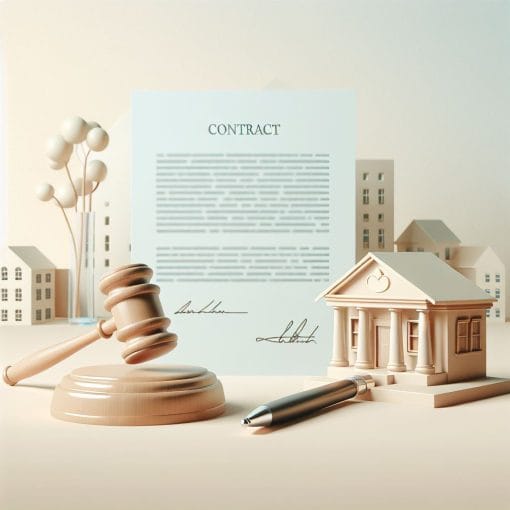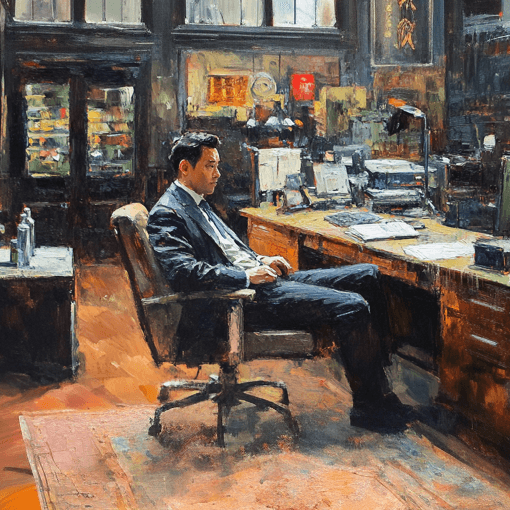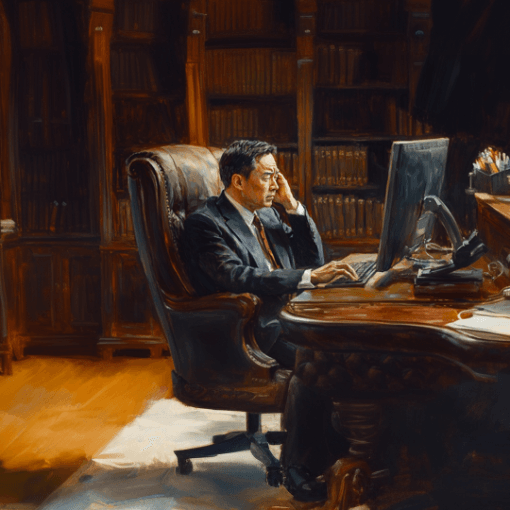Imagine you have been embroiled in a civil dispute for months, perhaps years more likely. After numerous motions, discoveries, and pre-trial conferences, the moment has arrived: your day in court. The trial is where all your preparation culminates, and understanding its intricacies can significantly impact the outcome.
This blog article offers a practical overview of key aspects of trial proceedings in Ontario civil litigation. While it doesn’t cover everything that may arise in court, it aims to give you a clearer sense of the common procedures, terms, and expectations involved at trial.
Whether in-person or conducted virtually (as many civil trials now are via Zoom), the structure of a civil trial in Ontario remains largely the same.
1. Call to Order and Appearances
The court registrar or clerk will begin by calling the case. Counsel identify themselves for the record, and the judge confirms who is present, whether all parties have been properly served, and that the matter is ready to proceed.
2. Preliminary Motions and Housekeeping Matters
Before the trial gets fully underway, the judge may address any outstanding procedural issues. This can include:
- Motions to exclude witnesses (to avoid witnesses shaping their testimony based on others’ evidence)
- Objections to anticipated evidence
- Clarifying how exhibits will be introduced and marked
- Scheduling considerations, such as expected time for each witness
The court may also review any agreed statements of facts or trial management agreements previously reached by the parties.
3. Opening Statements
Opening statements are not meant to argue the case, but to provide a road-map. The plaintiff typically goes first, outlining the key facts, what the evidence will show, and what legal conclusions the judge will be asked to draw.
The defendant may deliver their opening statement immediately afterwards or reserve it until the beginning of their own case.
An advocacy tip: A strong opening should be clear, concise, and persuasive, offering a forecast of the evidence and helping the judge understand the case theory from the outset.
4. Plaintiff’s Case
The plaintiff presents their evidence first through witnesses and documents. This stage includes:
- Direct (Examination-in-chief):
- The plaintiff’s lawyer questions their own witness. This must be carefully planned, as nervous or untrained witnesses may struggle to communicate clearly under pressure. Lawyers must ensure their questions are open-ended and focused on drawing out facts—not leading the witness.
- Cross-examination:
- The defence has the opportunity to challenge the credibility and reliability of each witness. Strategic questioning may expose inconsistencies or reveal bias, but must be carefully controlled to avoid reinforcing damaging points.
- Re-examination:
- The plaintiff may clarify any confusing points from cross-examination, but cannot raise entirely new topics.
Documents are introduced into evidence through witnesses and formally marked as exhibits. The court maintains these exhibits, and they form part of the official trial record.
5. Defendant’s Case
The defendant follows the same process if they choose to call evidence. If not, they may rest their case and argue that the plaintiff has failed to meet the legal burden of proof.
6. Reply Evidence (If Applicable)
If new issues were raised during the defence case, the plaintiff may request to call reply evidence. This is permitted only in limited circumstances and must strictly relate to rebutting points that could not have been anticipated earlier.
7. Closing Arguments
Both parties summarize their cases and explain how the evidence supports their respective legal positions.
- The plaintiff’s closing should tie together the key facts, refer back to the opening, and demonstrate how the evidence satisfies each legal element of the claim.
- The defendant’s closing typically challenges the sufficiency or credibility of the plaintiff’s evidence, highlights any legal deficiencies, and presents alternative interpretations.
An advocacy tip: A good closing argument is not a repetition of every detail, as it is a focused, structured submission that helps the judge reach a fair and reasoned decision.
8. Judgment
In most Ontario civil cases, especially judge-alone trials, the judge will “reserve” their decision. This means the ruling will be issued in writing (or orally at a later date) after the judge has had time to carefully review the evidence and legal arguments. In rare cases, the judge may deliver a decision immediately from the bench.
Life is unpredictable, and unforeseen circumstances can arise. However, failing to attend your scheduled trial can have severe repercussions. Under Rule 52.01 of the Ontario Rules of Civil Procedure, the court possesses discretion in handling such absences:
- If both parties are absent:
- The court may dismiss the action entirely.
- If only the plaintiff is absent:
- The court might dismiss the case, potentially with costs awarded to the defendant.
- If only the defendant is absent:
- The court may proceed in their absence, possibly resulting in a default judgment against them.
The court will consider factors such as prior attendance records, notice given, and reasons for absence. For instance, if a plaintiff misses court due to a medical emergency, the court is likely to be more lenient.
Courts in Ontario are generally reluctant to grant trial adjournments, especially at the last minute. Adjournments disrupt tightly managed court schedules, frustrate judicial efficiency, and can unfairly prolong the litigation process for all parties involved. To justify an adjournment, the requesting party must provide a compelling and well-documented reason, such as a medical emergency, sudden unavailability of a key witness, or other exceptional circumstances beyond their control.
Even then, adjournments are granted at the judge’s discretion and are not guaranteed. The court will consider factors like whether this is the first request, how much notice was given, whether the opposing party consents, and the impact on court resources. In some courthouses, such as Hamilton, the trial scheduling process is already unpredictable, cases are placed on a running list and lawyers may receive only 24 hours’ notice before their matter is called. In such systems, even a valid adjournment request may result in the case being pushed back months or years, as it must re-enter an already congested queue. For this reason, adjournments, when granted, are often for a few days, not for extended periods. Lawyers and litigants should be prepared to proceed as scheduled and treat adjournment requests as a last resort.
While most civil trials in Ontario are heard by a judge alone, it is still possible, though relatively uncommon, for a party to request a trial by jury. Juries in civil litigation are far less frequent than in criminal cases, but they remain an important procedural option in specific types of lawsuits.
When and Why Juries Are Used
In civil cases, the use of a jury is often a matter of strategy. A party may believe that their case could benefit from being heard by laypeople rather than a judge. For example, in personal injury claims or emotional disputes, one side might think a jury would be more sympathetic and more likely to award higher damages. In that sense, requesting a jury trial can be a calculated move to influence how the case is perceived and decided.
That said, many types of civil proceedings either do not allow for jury trials or are excluded under specific rules, such as Rule 76 (Simplified Procedure). When allowed, jury trials must be properly requested in accordance with Rule 47 of the Rules of Civil Procedure, section 108 of the Courts of Justice Act (CJA), and the Juries Act.
Jury Composition and Verdict Requirements
Civil juries in Ontario are made up of six jurors, unlike the twelve-person juries commonly used in criminal trials. Another key difference is that civil jury verdicts do not need to be unanimous. A verdict supported by a majority of the jurors (at least five out of six) is typically sufficient.
Order of Presentation at Jury Trials
When a trial proceeds before a jury, the process by which evidence and arguments are presented is carefully structured. This is often referred to as the order of presentation. Normally, the plaintiff presents their case first, followed by the defendant’s response, and then any reply or rebuttal the plaintiff may have. This sequencing ensures that the jury hears both sides fully and fairly.
All standard trial procedures still apply, such as opening statements, examination of witnesses, and closing submissions, but the tone and style of advocacy may shift slightly when addressing a jury rather than a judge. Lawyers are often more conscious of how facts appear to non-lawyers and may adjust their storytelling accordingly.
Challenging or Objecting to a Jury
Not all parties will agree that a jury trial is appropriate, and mechanisms exist to challenge the use of a jury. A party may bring a motion under Rule 52.07 or refer to relevant statutes to request that the trial proceed without a jury. These motions are often based on arguments that the case involves complex legal or factual issues not suitable for lay adjudication, or that the inclusion of a jury would be prejudicial.
In Ontario civil trials, to maintain the integrity of witness testimony, a party may request an order to exclude witnesses from the courtroom until they are called to testify. This practice aims to prevent witnesses from tailoring their evidence based on prior testimonies, thereby preserving the authenticity and reliability of the proceedings.
Legal Framework
The authority for excluding witnesses is embedded in Ontario’s Rules of Civil Procedure. Specifically, Rule 52.06(1) states:
The trial judge may, at the request of any party, order that a witness be excluded from the courtroom until called to give evidence.
Purpose and Rationale
The primary objective of excluding witnesses is to prevent them from altering their testimony based on what they observe in court. By ensuring that witnesses do not hear the testimonies of others before providing their own, the court aims to detect inconsistencies and assess credibility more effectively. This practice is particularly crucial in cases where witness credibility is a central issue.
Procedure and Implementation
When a party requests the exclusion of witnesses, the court typically grants the order as a matter of course. Once such an order is in place, witnesses are instructed not to discuss the case or share information about the proceedings with others who are yet to testify. This directive extends beyond the courtroom, emphasizing the importance of non-communication regarding testimonies to maintain the trial’s integrity.
Exceptions and Considerations
Certain individuals, such as parties to the case or those providing instruction to counsel, may be exempt from exclusion orders. However, the court retains the discretion to require such individuals to testify before other witnesses are called. This flexibility ensures that the trial proceeds in a manner that safeguards the fairness and reliability of witness testimonies.
Challenges in the Digital Age
With the advent of virtual court proceedings and the pervasive use of digital communication, enforcing witness exclusion orders has become more complex. There is an increased risk of witnesses accessing real-time updates or recordings of the trial through online platforms, potentially compromising the integrity of their testimony. Courts and legal practitioners must remain vigilant, implementing measures to mitigate such risks and ensure that exclusion orders are effectively upheld in both physical and virtual settings.
Presenting evidence is governed by a combination of the Rules of Civil Procedure, the Evidence Act, and established courtroom customs. Key procedures include:
- Witness Testimony
- Witnesses must be sworn in before testifying. For expert witnesses, their qualifications are established through a process called voir dire unless both parties agree on their expertise.
- Documentary Evidence
- Merely listing a document in an affidavit doesn’t guarantee its admissibility. Documents must be properly introduced and marked as exhibits during the trial to be considered by the judge.
- Exhibit Management
- Organizing exhibits in a logical sequence aids the court’s understanding. Cooperation between opposing counsel to streamline this process is often appreciated by the court.
Exhibits, typically documents or physical items, are a subset of evidence presented during the trial. Properly managing exhibits involves:
- Introduction
- Formally introducing the item during witness testimony.
- Marking
- Having the court assign an exhibit number or letter for reference.
- Admissibility
- Ensuring the item meets the criteria for admissibility, which may involve addressing objections from opposing counsel.
Trials are the most formal and resource-intensive stage of civil litigation. They require precision, foresight, and adaptability, both from lawyers and their clients. While few cases ever make it to trial, those that do demand a well-executed strategy built on clear evidence, strong witness preparation, and a deep understanding of courtroom procedure.
This blog is for general informational purposes only and does not constitute legal advice. For advice on your specific situation, please consult a licensed lawyer.




